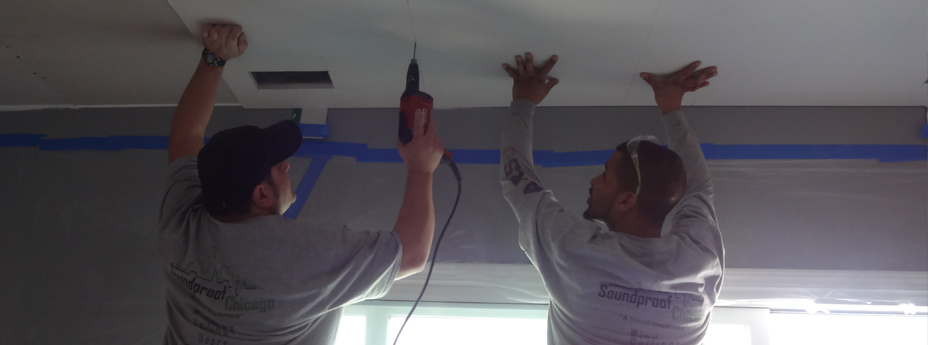Fixing Popped Nails or Screws is a common DIY homeower weekend project. Here is a guide to help our users. This article is an excerpt form book called “Creative homeowner – Ultimate guide DRYWALL” by “Upper Saddler River, New Jersey“.
NAIL POP refers to nails or screws that show their heads after the drywall job has been taped, finished, and painted. If nail pop occurs near the end of a dry- walling job but before you paint, just the pressure of a paint roller can force a nail- or screw head through the finished surface. Typically, however, nails won’t pop until months later.
Nail pop can occur wherever there is space between the back side of the panel and the face of the framing member to which it is attached. One of two events usually accounts for such a space: either the dry Waller neglected to hold the panel firmly against the stud face while fastening it, or the stud contained excessive moisture when it was installed, and as it dried, it warped or shrank away from the drywall, leaving a gap. In either case, a slight pressure applied to the drywall face is all it takes. Sometimes, in fact, nail pop doesn’t require even that” nail-or screw heads can reveal themselves with the normal shrinkage of framing lumber as the house dries out over its first year, especially during the first winter, when it is heated.
If you have the opportunity, take preventive measures. Frame with stable lumber that has been dried to the proper moisture content. When hanging panels, apply mastic adhesive to the studs, and then drive in two nails at each location, spacing them about 2 inches apart. Make sure that you hold the drywall securely against the stud before driving nail or screws.
To fix a panel with popped nails or screws, first remove the protruding fasteners-or, easier still, drive them in farther until their heads sit just below the surface of the face paper. Next, drive screws or nails 1½inches above and below (or to each side of) the popped fastener. This will secure the drywall against the framing. Lastly, treat the area with three coats of joint compound, scraping each dry coat before applying the next. You’ll notice that some nail pops will disappear on their own as the house expands and contracts from season to season.
Nail popping. This can occur when framing members shrink behind drywall panels. Drive the protruding fasteners through, and then add additional fasteners 1 ½ in. On each side to bring the drywall back against the framing.
FIXING BROKEN OR BLOWN-OUT DRYWALL:
If you miss-cut a panel that has to fit around a utility box or into an inside corner and then force it into place instead of trimming it, the panel will likely blow out, tearing the face paper and cracking the gyp-sum within. This can also happen where a door or window frame has been misaligned with the partition line or at a corner that is significantly out of plumb.
To repair a blown-out section of drywall, cut away all the torn paper using a utility knife, and clean out the loose gypsum. Next, use a 5-or6-inch knife to apply a coat of joint compound. Smooth this coat flush with the face of the panel; allow it to dry thoroughly; and then follow the usual there-layer taping procedure described in Chapter 6, page 108.
Fixing Blowouts.If a drywall panel hasn’t been cut exactly to size around utility boxes and inside corners or if door and window frames are out of the partition line, the panel that is forced into place will likely blow out. Fix blowouts by cutting away loose drywall with a utility knife and applying new layers of joint compound.
CLEANING UP JOINT COMPOUND
On a Typical job, joint compound tends to end up all over the place. Gobs of this wet, sloppy substance fall to the floor or get splattered onto nearby walls. You’ll find that “mud” cleans up much more easily when it’s still wet. Simply scoop it up with a 5-inch drywall knife, and then follow with a damp rag or sponge to wipe up the remaining smear. If the joint compound has been left to dry, chip away at the hardened mound with the same tool. In most cases, it will break free. Again, follow with a wet cloth or sponge to get the last of it up.
FIXING BAD END-BUTT JOINTS
FLUSH END-BUTT JOINT Soccur where the underrepresented or handmade cuts on drywall panels meet one another. Because the factory edges to accommodate the joint compound, these joints tend to bulge once they’ve been taped and finished. Once you’ve created these crowns, it’s difficult to knock them down without damaging the finish. To make an end-butt joint crown less conspicuous, apply a 20-inch-wide seam of joint compound, and feather the edges down gradually to the drywall face.
PATCHING PLASTER:
REPAIRING PLASTER DAMAGE is usually more involved than fixing drywall problems. Small cracks and gouges in plaster can all be repaired with a thin coat of drywall joint compound. But deeper and wider cracks require a different approach. The damaged area first has to be cleaned so it’s free of dust and plaster debris. Then the hole must be filled to just below the surrounding surface with patching plaster. Once dry, the repair can be completed with a smooth coat of joint compound.
TOOLS & MATERIALS
- Patching plaster or joint compound
- Spray bottle filled with clean water
- Paint roller and roller tray
- 6- and 10-in. taping knife
| Step 1 |
Use patching plaster to fill most of the repair hole. Mix it according to the package directions, and spread it using a 6-in. Taping knife. Once the plaster is almost dry, mark a crosshatch pattern in the surface to create better bonding for the joint compound. Before applying the joint compound, spray the surface with water.
| Step 2 |
Cover the patching plaster with a coat of drywall joint compound. Use a 10-or 12-in.Wide taping knife to get the smoothest surface. Rest one corner of the blade on the wall, and pull the knife over the patch. Once the joint compound is dry, sand it flush to the surrounding surface using 100-grit sandpaper. Remove the sanding dust, prime, and paint.
Continue reading about Drywall Taping – Hand Tools

